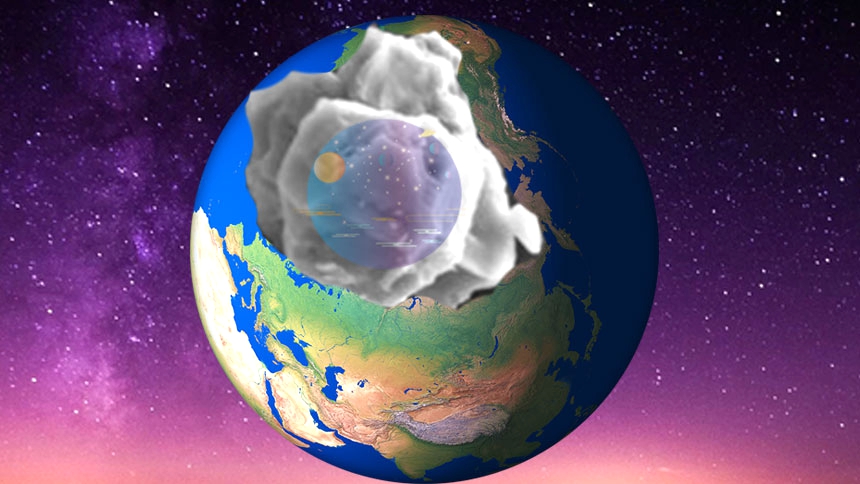This meteorite is a carbonaceous chondrite, a supremely “primitive” object, rich in carbon compounds. It existed when the earth was born 4.6 billion years ago, so it is an ancient substance. By dissolving the meteorite material in acid, the researchers were able to isolate so-called presolar or interstellar dust, which is tiny and rare. We can use this feeble material to measure the age of the universe. The universe somehow provides a clock, cosmic rays are constantly traveling through space, and when these high-energy particles, such as protons and alpha particles, collide with atomic nuclei in dust, the nuclear damage leaves isotopic signatures. The longer the dust drifts around in the galaxy, the more nuclear changes accumulate.
We can account for the different initial compositions from different sources of stellar elements, and all the potential heating and pounding trauma that cosmic dust can endure, potentially using cosmic ray signatures to work out how long dust persists in interstellar space. So we can know the age of this Murchison meteorite material, and we can also determine how old the oldest material on Earth is. In this case, especially with the accumulation of Neon-21, most of Murchison’s antiquities are less than a few hundred million years old (comparable to the time it was originally drifting before being trapped inside Murchison’s body). But at least 8 percent date back to about 7.5 billion years ago, well beyond the age of the Sun and about 2 billion years older than any previous sample.
Scientists have determined that the dust in the Murchison meteorite formed about 7.5 billion years ago, not only in the Milky Way, but in the entire universe, there is a lot of ancient material in many stars, long before the birth of planets or stars . It is not difficult to understand that planets and stars are cosmic dust that is continuously gathered together through gravity, so those cosmic dust already existed before the birth of stars or planets. Thanks to these grains, scientists now have direct evidence that stars began to form in our galaxy 7 billion years ago, perhaps when the sun was born. The Murchison meteorite is like a “time capsule” that can help us understand the characteristics of the early sun and the chemical composition of the solar system during its formation.
After thousands of years of human civilization development, we still don’t know how simple chemistry becomes self-repairing and self-replicating complex biology. These ancient black rocks can help us find the relevant answers. The closer we look, the more we discover what we don’t know things. As the late American scientist Carl Sagan said: “The universe is in our hearts, we are made of stars, and we are a way for the universe to know itself.”
